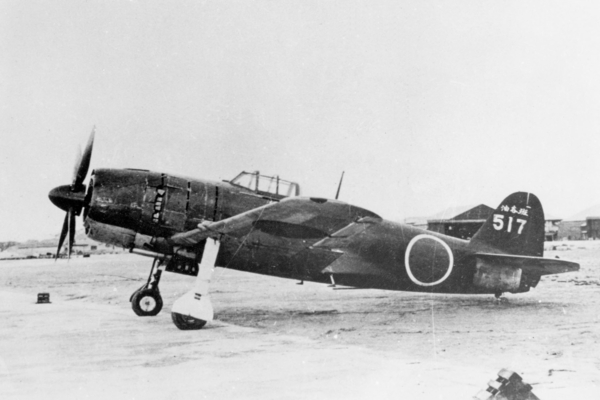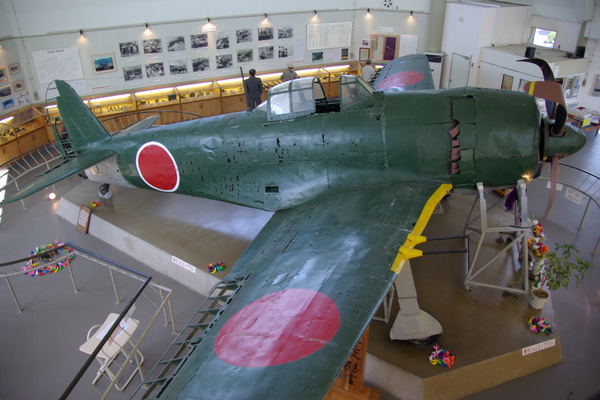

紫電 Kawanishi N1K Shiden
A Detailed Overview
The Kawanishi N1K Shiden, known as "Violet Lightning," was one of the most advanced Japanese fighters of World War II. Originally conceived as a floatplane, it was later developed into a land-based fighter that earned a reputation as a formidable opponent to Allied aircraft. Let’s dive into the Shiden’s history, design, and legacy.
Development and Design The Shiden began as the N1K Kyofu, a floatplane designed to operate in areas with limited airfield access. As the war progressed, the need for high-performance land-based fighters prompted Kawanishi to adapt the design into the N1K1-J Shiden. The aircraft featured robust construction, excellent maneuverability, and heavy armament, making it a standout in Japan’s aerial arsenal. Key Features - Hydraulic controls for improved handling, even at high speeds. - Advanced wing design optimized for lift and agility. - Reinforced landing gear to handle rough airfields. - A reliable engine offering competitive performance.
Armament The Shiden was heavily armed to match the capabilities of Allied fighters and bombers: - Four 20mm Type 99 cannons, two mounted in each wing, provided substantial firepower. - External hardpoints for bombs or fuel tanks, enhancing versatility. Engine The N1K Shiden was powered by the Nakajima Homare 21 radial engine, delivering 1,990 horsepower and enabling speeds of up to 580 kilometers per hour. Variants Several variants of the Shiden were developed: - N1K1-J: The initial land-based version, derived from the Kyofu floatplane. - N1K2-J Shiden-Kai: An improved version with simplified manufacturing, better handling, and increased performance.
Operational History The Shiden entered service in 1943 and saw extensive use in the final years of the war. It gained recognition for its effectiveness against advanced Allied aircraft. Major Engagements - Defense of the Philippines: Played a crucial role in intercepting Allied bombers and fighters. - Okinawa Campaign: Demonstrated its ability to challenge even the most advanced enemy planes, including the P-51 Mustang and F6F Hellcat. - Homeland Defense: Deployed in the defense of the Japanese mainland against Allied bombing raids. Tactics Pilots used the Shiden’s excellent maneuverability to engage in dogfights, often outperforming Allied aircraft in close combat. Its heavy armament allowed it to take on both bombers and fighters with equal effectiveness.
Strengths and Weaknesses Strengths - Exceptional agility, rivaling or surpassing most Allied aircraft. - Heavy firepower, capable of destroying large bombers with ease. - Rugged construction, allowing it to operate from less-than-ideal airfields. Weaknesses - Complex manufacturing process, limiting production numbers. - High maintenance requirements due to its sophisticated systems. - Engine reliability issues that occasionally hindered performance.
Legacy The Shiden is often regarded as one of Japan’s finest wartime aircraft, showcasing the nation’s ability to produce cutting-edge designs under challenging circumstances. Influence on Tactics The Shiden forced Allied pilots to adopt more cautious tactics, as it was a match for even their most advanced fighters. Cultural Significance Though not as famous as the Zero, the Shiden became a symbol of Japan’s resilience in the face of mounting challenges. Its success as a land-based fighter highlighted the adaptability of Japanese engineers and pilots. Surviving Aircraft A few Shiden aircraft have been preserved in museums, serving as reminders of the technological innovation and dedication of their designers and operators. Conclusion The Kawanishi N1K Shiden was a remarkable aircraft that stood out for its agility, firepower, and adaptability. Despite the challenges of wartime production, it left a lasting legacy as one of Japan’s most capable fighters. The Shiden’s story is one of perseverance, innovation, and the enduring spirit of those who flew it in defense of their homeland.